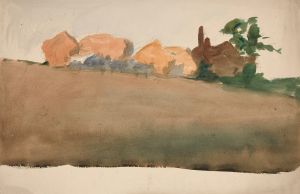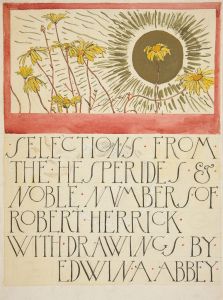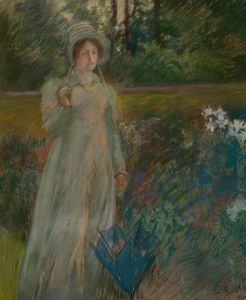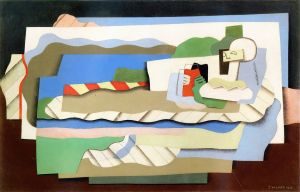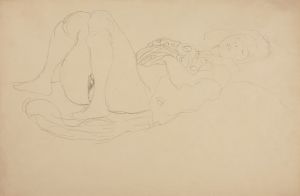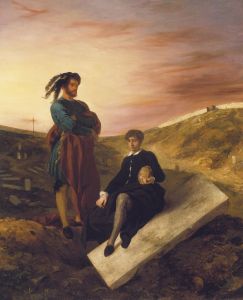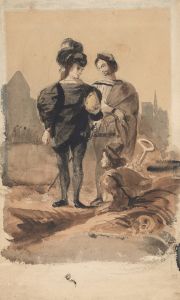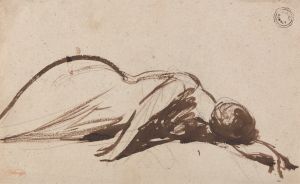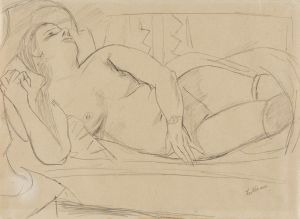
Study for the reclining figure of Hamlet, from The Play Scene, Hamlet, act 3, scene 2
A hand-painted replica of Edwin Austin Abbey’s masterpiece Study for the reclining figure of Hamlet, from The Play Scene, Hamlet, act 3, scene 2, meticulously crafted by professional artists to capture the true essence of the original. Each piece is created with museum-quality canvas and rare mineral pigments, carefully painted by experienced artists with delicate brushstrokes and rich, layered colors to perfectly recreate the texture of the original artwork. Unlike machine-printed reproductions, this hand-painted version brings the painting to life, infused with the artist’s emotions and skill in every stroke. Whether for personal collection or home decoration, it instantly elevates the artistic atmosphere of any space.
Edwin Austin Abbey was an American artist known for his illustrations and murals, particularly those depicting scenes from literature and history. One of his notable works is "Study for the Reclining Figure of Hamlet, from The Play Scene, Hamlet, Act 3, Scene 2." This artwork is a study, or preparatory work, for a larger piece that Abbey was developing, focusing on a scene from William Shakespeare's famous tragedy "Hamlet."
The play "Hamlet" is one of Shakespeare's most celebrated works, written around 1600. It tells the story of Prince Hamlet of Denmark, who seeks revenge against his uncle, Claudius, who has murdered Hamlet's father, taken the throne, and married Hamlet's mother, Gertrude. Act 3, Scene 2, known as "The Play Scene," is pivotal in the narrative. In this scene, Hamlet stages a play called "The Mousetrap" to gauge Claudius's guilt. The play within the play mirrors the events of King Hamlet's murder, and Hamlet closely observes Claudius's reaction to determine his culpability.
Abbey's study captures the essence of this dramatic moment. The reclining figure of Hamlet is central to the composition, reflecting the prince's contemplative and strategic nature. Abbey's attention to detail and his ability to convey the psychological depth of Shakespeare's characters are evident in this work. The study likely served as a preliminary exploration of composition, form, and emotion, which Abbey intended to refine in a more finished piece.
Edwin Austin Abbey was born in Philadelphia in 1852 and gained prominence as an illustrator for magazines such as Harper's Weekly. His work often featured literary subjects, and he became known for his ability to bring classic texts to life through his art. Abbey moved to England in 1878, where he continued to develop his career and became associated with the Pre-Raphaelite movement, which emphasized detailed observation and vibrant colors.
Abbey's interest in Shakespearean themes was part of a broader trend during the 19th century when Shakespeare's works experienced a resurgence in popularity. Artists and writers of the time were drawn to the rich narratives and complex characters found in Shakespeare's plays, and Abbey was no exception. His studies and finished works contributed to the visual culture surrounding Shakespearean drama, offering audiences a new way to engage with these timeless stories.
While the specific details of the final work for which this study was intended are not widely documented, Abbey's contributions to art and his interpretations of literary scenes remain significant. His ability to capture the tension and intrigue of "Hamlet" through his studies highlights his skill as an artist and his deep appreciation for Shakespeare's work. Abbey's legacy continues to be celebrated for its impact on both American and British art, particularly in the realm of literary illustration.







